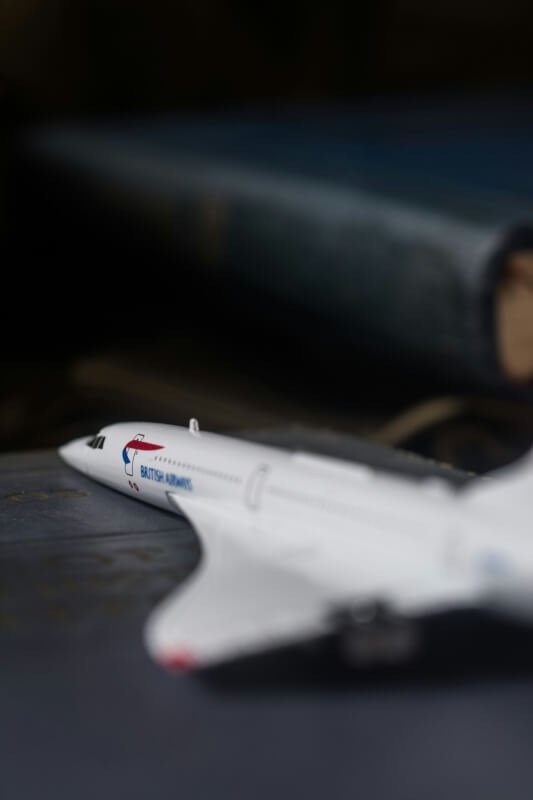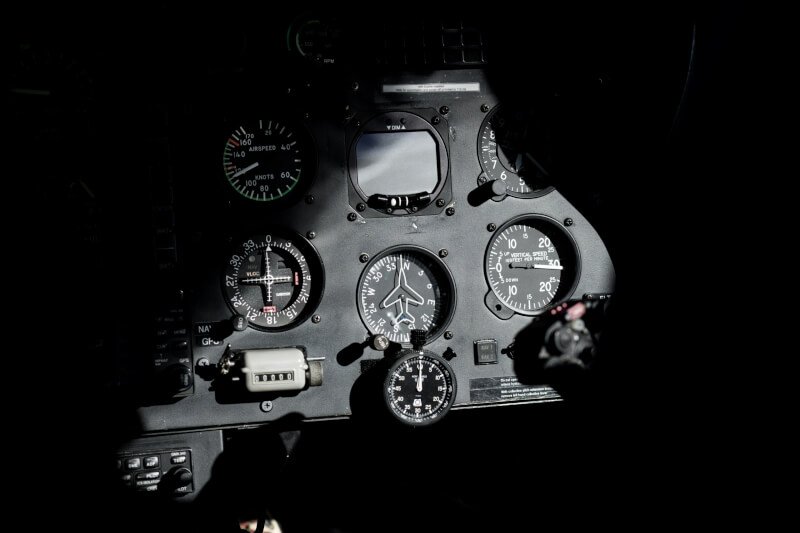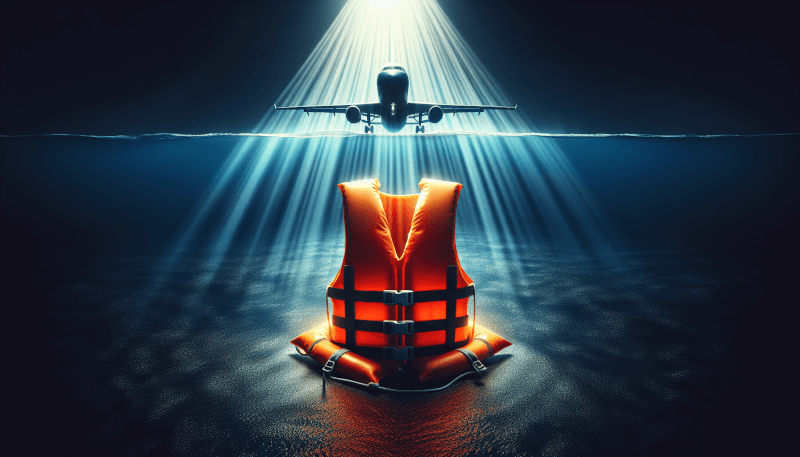Imagine yourself in a terrifying situation where a plane you’re traveling in suddenly crashes. Amidst the chaos and fear, you find yourself desperately searching for a way to survive. This is where the “Airplane Crash Survival Handbook” comes to your rescue. Packed with invaluable tips, strategies, and practical advice, this handbook is your ultimate guide to overcoming the daunting challenges of a plane crash. From preparing for emergency landings to navigating through wreckage, this comprehensive resource equips you with the knowledge and skills needed to increase your chances of survival. So, buckle up and get ready to empower yourself with life-saving information that could make all the difference in the face of an unthinkable disaster.
Preparing for the Flight
Before embarking on your journey, it is important to take some time to prepare for the flight. By following a few essential steps, you can increase your chances of survival in the event of an airplane crash.
Checking the Weather before Traveling
One crucial step in preparing for a flight is checking the weather conditions at your departure and arrival destinations. Being aware of the weather patterns can help you anticipate potential turbulence and make informed decisions about your itinerary. If you are flying during a stormy season or to an area prone to extreme weather, it might be wise to consider alternative travel options or postpone your trip if possible.
Packing Essential Items
When packing for your flight, it is crucial to include essential items that can aid in your survival in case of an emergency. Some essential items to include are a flashlight, a whistle, a multitool, a first aid kit, a portable water filter, extra clothing suitable for the destination climate, and high-energy non-perishable snacks. These items can prove invaluable when faced with unexpected challenges during an emergency situation.
Making Copies of Important Documents
Having copies of important documents, such as your passport, identification, and travel insurance, is a wise precaution. In the unfortunate event of a plane crash, these documents may get lost or damaged. By keeping copies in a secure location, such as your carry-on bag or a waterproof pouch, you can facilitate the process of identification and reissue of important documents during the recovery phase.
Knowing the Emergency Exits
Before takeoff, it is crucial to familiarize yourself with the location of emergency exits on the aircraft. Take a moment to count the number of rows between your seat and the nearest exits. This knowledge can be crucial in an emergency situation, as low visibility and panic can hinder finding the nearest exit. Additionally, pay close attention to the safety briefing provided by the flight attendants, as it contains essential information on emergency procedures specific to that aircraft.
Understanding the Safety Features of the Aircraft
Understanding the safety features of the aircraft you are flying can give you a significant advantage in the event of an accident. Take the time to read the safety card in the seat pocket in front of you and familiarize yourself with the location and operation of emergency equipment, such as the life vest and oxygen mask. Knowing how to deploy these devices correctly can save precious time and ensure your safety in an emergency situation.
Survival Techniques
In the unfortunate event of an airplane crash, knowing and understanding essential survival techniques can significantly increase your chances of survival. While each survival scenario is unique, there are some universal techniques that can be applied in various situations.
Brace for Impact
During the final moments before impact, it is crucial to adopt the brace position. This position minimizes the risk of head and neck injuries and maximizes your chances of survival. To assume the brace position, place your feet flat on the floor, cross your hands on top of the seat in front of you, and rest your forehead on your hands.

Utilizing the Brace Position
In an emergency landing or crash, the brace position can make a significant difference in your survival. It reduces the impact forces on your body and can protect vital organs. Remember to brace for impact even during water landings, as it can reduce the risk of injury upon impact with the water surface.
Evacuating the Aircraft
After a crash landing, the critical goal is to safely evacuate the aircraft as quickly as possible. Stay calm and follow the instructions provided by the flight crew, who are trained to handle emergency situations. If your nearest exit is obstructed, move toward the next available exit. Ensure that you do not hinder the evacuation process or cause injury to yourself or others in your attempt to exit the aircraft.
Surviving in Water
If the aircraft lands in water, your survival may depend on your ability to stay afloat and await rescue. Inflate your life vest if it has not automatically done so, and secure it tightly around your waist. Exit the aircraft promptly and move away from it to avoid being injured by debris or pulled underwater. Remain calm and follow the instructions of nearby rescue personnel or other survivors.
Surviving in a Desert
In the event of a plane crash in a desert, it is crucial to preserve your energy and stay hydrated. Seek shelter from the scorching sun by using available materials such as wreckage or clothing to create shade. Conserve water by drinking only when necessary and rationing your supply. Look for potential sources of water such as vegetation or areas where water may collect, such as depressions in the ground or rock formations.
Surviving in a Forest
A forest crash landing can present unique challenges and opportunities for survival. Seek shelter under the canopy of trees to protect yourself from the elements and potential predators. Use fallen branches and tree limbs to construct a rudimentary shelter. Be cautious of wild animals and unfamiliar plant life. Collect water from streams or rivers, but remember to purify it before consumption by using water purification tablets or boiling it.
Surviving in the Mountains
In the event of an aircraft crash in mountainous terrain, resourcefulness and knowledge of survival techniques become paramount. Seek shelter under rock formations or in caves to shield yourself from extreme temperatures and harsh weather conditions. Utilize your surroundings to find edible plants and game, but exercise caution and avoid consuming anything you are unsure of. Be prepared for changes in weather and have proper insulation to protect yourself from hypothermia.
First Aid and Medical Assistance
In an emergency situation, basic first aid skills can be vital in treating injuries and providing immediate medical assistance. Being able to administer first aid correctly and effectively can potentially save lives.

Administering Basic First Aid
Having a basic knowledge of first aid is beneficial in any emergency situation, including airplane crashes. Take a first aid course before traveling to equip yourself with essential skills such as CPR (cardiopulmonary resuscitation), treating wounds, and managing fractures or sprains. Remember to prioritize your safety and the safety of others when providing aid.
Dealing with Common Injuries
Plane crashes can result in a variety of injuries, including cuts, bruises, burns, and fractures. Knowing how to treat these injuries can help alleviate pain, prevent further complications, and increase the chances of survival. Clean any wounds to prevent infection, use sterile dressings to cover burns, and immobilize fractures to prevent further injury.
Providing Help to Others
In a survival situation, assisting others can foster a sense of teamwork and increase the chances of everyone’s survival. If you have received first aid training, offer your assistance to those in need. Remember to prioritize your own safety and assess the situation before providing aid.
Recognizing and Managing Shock
The physical and emotional stress of a plane crash can lead to shock, a life-threatening condition. Symptoms of shock include pale or clammy skin, rapid heartbeat, shallow breathing, and confusion. If you or someone else is experiencing shock, keep them warm, elevate their legs slightly if it does not cause pain, and seek medical assistance as soon as possible.
Communication and Signaling
Effective communication and signaling are crucial for alerting rescuers and increasing the chances of being located in a timely manner. When stranded, it is essential to utilize all available means to communicate distress and request help.
Using the Emergency Communication Devices
In modern aircraft, emergency communication devices such as distress beacons and onboard satellite phones are commonly available. Familiarize yourself with the operation of these devices before your flight and ensure they are in working order. In the event of a crash, activate the distress beacon and use the satellite phone to inform authorities of your situation.
Signaling for Help
If you find yourself in a survival situation without access to emergency communication devices, it is crucial to know how to signal for help using available resources. Auditory signals such as yells, whistles, or banging on metal objects can attract attention. Visual signals using reflective surfaces, mirrors, and bright clothing can also aid in attracting the attention of potential rescuers.

Identifying Local Animal Sounds
Being able to recognize local animal sounds can serve as an additional means of communication in a survival situation. Animals often respond to distress sounds, and mimicking their calls may help attract their attention, leading to potential rescue or assistance.
Creating SOS Signals
Creating SOS signals can significantly increase your chances of being located by search and rescue teams. The SOS distress signal consists of three short signals, followed by three long signals, and then three short signals again. This pattern can be communicated using a whistle, flashlight, or any other means of making repetitive and easily distinguishable sounds or flashes.
Building Shelter and Finding Food
When faced with a survival situation, building a shelter and finding food become primary concerns. Knowing how to utilize available resources to create shelter and sustain yourself until rescue is essential for survival.
Building a Shelter with Available Materials
Depending on the environment, there are various strategies for building a survival shelter. In forested areas, use fallen branches, leaves, and tree limbs to create a debris hut or lean-to shelter. In desert or mountainous terrains, adapt your shelter-building techniques to the available materials, such as rocks, sand, or snow. These shelters should provide protection from the elements and insulation to maintain body heat.
Finding and Purifying Drinking Water
In any survival situation, finding a clean and reliable water source is crucial for hydration and avoiding dehydration. Look for sources such as rivers, streams, and waterfalls, but be cautious of stagnant water that may carry harmful bacteria. Boiling water is the most effective method of purification, but if you do not have the means to boil, utilize water purification tablets or portable filters.
Identifying Edible Plants and Insects
Foraging for edible plants and insects can provide a vital source of sustenance in a survival situation. Familiarize yourself with the native flora and fauna of the area you are traveling to in advance. Identify edible plants, such as berries, nuts, and tubers, and learn about insects that are safe for consumption. Avoid consuming unfamiliar plants or insects that may be poisonous.
Building Traps and Snares to Catch Food
If finding edible plants and insects is challenging, building traps and snares to catch small game can supplement your food supply. Learn basic trapping techniques and identify areas where wildlife may be abundant. Construct traps using available materials and natural camouflage, ensuring that they comply with local regulations and ethical considerations.
Navigating and Finding Help
Navigating unfamiliar terrain and finding help are critical in a survival situation. Understanding common navigation techniques and using natural landmarks can increase your chances of reaching civilization or intersecting a rescue party.

Using Common Navigation Techniques
Learning basic navigation techniques such as using a compass, reading maps, and identifying natural landmarks can help you find your way to safety. Carry a compass and a map of the area, and practice orientating yourself using these tools in non-emergency situations to build confidence and familiarity.
Locating Nearby Civilization
If the crash site is not within immediate proximity to civilization, your priority should be to locate the nearest help. Observe your surroundings for signs of civilization such as distant roads, smoke from chimneys, or man-made structures. Depending on the terrain, identifying high points or elevated areas can provide a vantage point to survey the surroundings for signs of rescue or civilization.
Using Natural Landmarks for Orientation
Natural landmarks play a crucial role in orienting yourself in unfamiliar territory. Recognizable features such as rivers, mountains, or coastlines can serve as reliable points of reference for navigation. Make note of these landmarks and use them to guide your movement and decision-making.
Determining the Direction of Water Flow
In the absence of a compass or natural landmarks, determining the direction of water flow can be a useful method for navigating. Water flows downhill, so following a river downstream can lead you to lower-lying areas or potential sources of civilization. However, exercise caution when traversing unfamiliar bodies of water and be mindful of potential hazards.
Psychological Survival
In addition to physical challenges, surviving an airplane crash requires resilience and fortitude on a psychological level. Maintaining a positive mindset, coping with fear and anxiety, developing a survivor’s attitude, and building supportive relationships can significantly impact your chances of survival.
Maintaining a Positive Mindset
Keeping a positive mindset in the face of adversity can help you stay focused, motivated, and increase your chances of making rational decisions. Focus on small achievements and milestones, practice gratitude for the resources and support available to you, and visualize successful outcomes to maintain a positive frame of mind.
Coping with Fear and Anxiety
Fear and anxiety are natural responses to a traumatic event like an airplane crash. Acknowledge and accept these emotions, but do not allow them to paralyze you. Utilize relaxation techniques such as deep breathing, meditation, and mindfulness to calm your mind and regulate your emotions. Engaging in activities that distract or provide solace, such as reading or listening to music, can also help alleviate anxiety.

Developing Survivor’s Attitude
A survivor’s attitude comprises resilience, adaptability, and resourcefulness. Cultivate these qualities by fostering a mindset of self-reliance, problem-solving, and innovation. Embrace challenges as opportunities for personal growth and see each obstacle as a stepping stone toward survival and eventual rescue.
Building Supportive Relationships
Forming supportive relationships with fellow survivors can provide emotional support, shared knowledge, and a sense of camaraderie in a survival situation. Prioritize collaboration, communication, and teamwork to increase your chances of survival. Together, you can pool resources, share responsibilities, and provide comfort and companionship during the challenging moments.
Rescue and Recovery
After an airplane crash, the ultimate goal is rescue and recovery. Knowing how to attract attention, preparing for recovery efforts, working with rescuers, and reuniting with loved ones are crucial aspects of the post-crash phase.
Attracting Attention for Rescue
Once you have established a secure location and met your immediate survival needs, focus on attracting the attention of potential rescuers. Utilize communication devices, continue signaling for help, and create visible SOS signals. Make noise by shouting or using whistles to alert nearby rescuers to your presence. Remember to conserve energy but dedicate regular time intervals to active signaling and attracting attention.
Preparing for Recovery Efforts
While waiting for rescue, remain prepared for recovery efforts. Maintain your survival skills, keep calm, and stay focused on your safety. Ensure that necessary provisions such as food, water, and shelter are well-maintained. Be vigilant for any signs of approaching rescue teams and be ready to respond quickly to their instructions.
Working with Rescuers
When rescuers arrive, it is essential to cooperate and follow their instructions to ensure a safe and successful recovery. Provide them with accurate information regarding your health, injuries, and the condition of other survivors. Assist rescuers in identifying any potential hazards or obstacles that may impede the rescue operation.
Reuniting with Loved Ones
Once the rescue and recovery phase is complete, the emotional aspect of reuniting with loved ones comes into focus. Communicate with authorities, family, and friends to coordinate your return and reunite with your loved ones. Seek emotional support and debriefing to help process the trauma and aid in the recovery process for all parties involved.
Learning from Past Crashes
Analyzing previous survival stories is an effective way to learn from past experiences and prepare for potential emergencies. By studying the actions, decisions, and outcomes of survivors, valuable lessons can be gleaned and implemented to increase your chances of survival.
Analyzing Previous Survival Stories
Research and analyze previous airplane crash survival stories to understand the key factors that contributed to successful outcomes. Study the actions of survivors, their decision-making process, and the methods they employed to increase their chances of rescue. By learning from these accounts, you can gain valuable insights that may prove crucial in a real-life emergency.
Implementing Lessons Learned
After studying past survival stories, it is essential to implement the lessons learned into your own emergency preparedness plan. Identify similarities between your planned journey and the past incidents to establish precautionary measures. Modify your preparation, survival techniques, and resource provisions accordingly to enhance your chances of survival should you find yourself in a similar situation.
Staying Updated with Safety Guidelines
To stay well-informed and prepared, it is vital to stay up-to-date with current safety guidelines and regulations provided by aviation authorities and relevant organizations. Regularly review safety information, attend safety briefings before flights, and familiarize yourself with any specific procedures or guidelines relevant to the aircraft you will be flying on. By staying informed, you can adapt your preparedness plan accordingly and maximize your chances of survival in an emergency.
Preventing and Reducing Risks
While survival skills are essential, taking proactive measures to prevent and reduce risks is equally important. By selecting safe airlines and aircraft, understanding safety ratings, prioritizing seat selection, avoiding dangerous situations, and following safety instructions, you can minimize the likelihood of encountering an emergency situation.
Choosing the Safest Airlines and Aircraft
Research and choose airlines and aircraft with excellent safety records. Utilize resources such as safety ratings, accident histories, and customer reviews to make informed decisions. Selecting airlines and aircraft known for their commitment to safety can significantly reduce the risk of encountering an emergency situation.
Understanding the Safety Ratings
Familiarize yourself with safety ratings and assessments provided by aviation regulatory bodies. These ratings evaluate various aspects of an airline’s safety procedures, maintenance practices, pilot training, and more. By understanding these ratings, you can make informed decisions when selecting an airline and aircraft for your journey.
Prioritizing Seat Selection
When booking your flight, prioritize seat selection based on safety considerations. Seats located near emergency exits offer the advantage of being closer to potential escape routes. Additionally, seats located within the “brace position zone” can provide added protection during impact. Consult seating maps and select seats that align with these safety considerations whenever possible.
Avoiding Dangerous Situations
Whenever possible, avoid traveling to regions or flying during seasons that are known for hazardous weather conditions or other potential risks. Research your intended destination and consider alternative travel plans if safety concerns arise. By taking a proactive approach to avoid dangerous situations, you can minimize the likelihood of an emergency occurring.
Following Safety Instructions and Briefings
During pre-flight safety briefings, pay close attention and follow the instructions provided by the flight crew. Ensure that you understand the location and operation of emergency equipment, the brace position, and any other safety procedures specific to the aircraft. Familiarity with these instructions can mean the difference between life and death in an emergency situation.
In conclusion, preparing for the possibility of an airplane crash and acquiring survival skills are vital measures to enhance your chances of survival. By checking the weather, packing essential items, making copies of documents, familiarizing yourself with emergency exits and safety features, you can set a strong foundation for survival. Understanding techniques to brace for impact, evacuate, and survive in various environments can help you navigate the aftermath of a crash. Equipping yourself with basic first aid skills, communication techniques, and knowledge of building shelter and finding food can be life-saving. By nurturing a positive mindset, coping with fear, and fostering supportive relationships, you can combat the psychological challenges of survival. Preparing for rescue and recovery, learning from past crashes, preventing and reducing risks, and following safety guidelines further boost your chances of survival. Remember, while the possibility of an airplane crash can be daunting, being well-prepared and knowledgeable increases your chances of survival and reunion with your loved ones.


